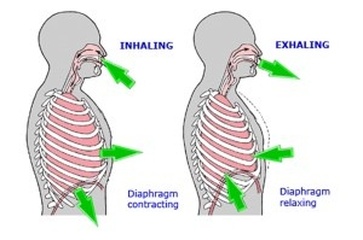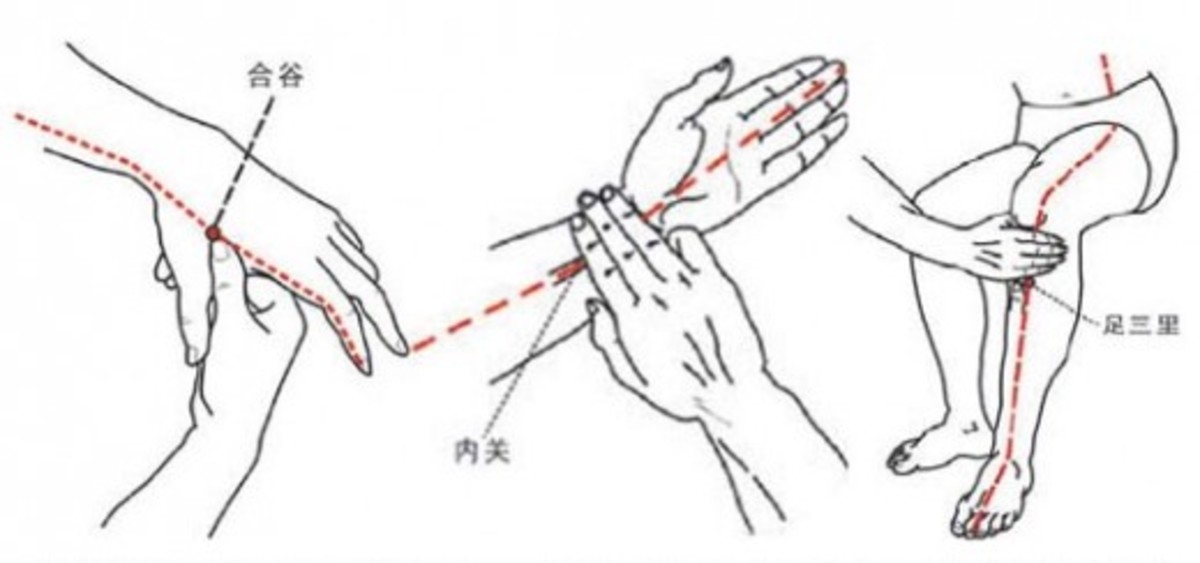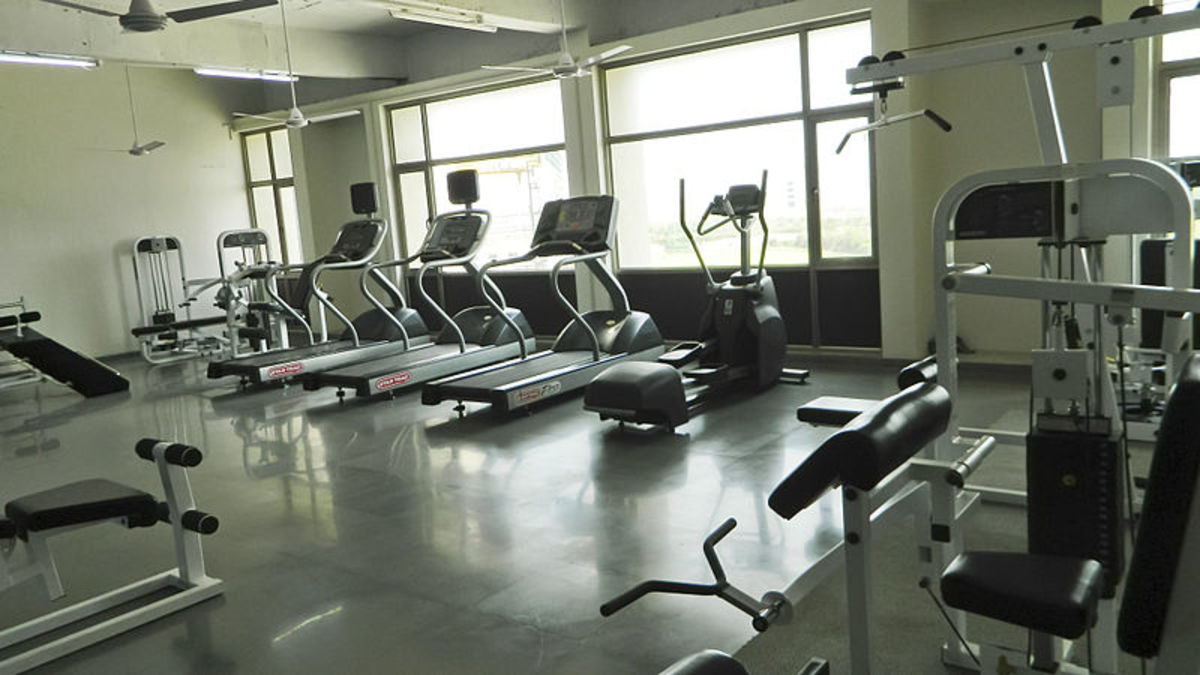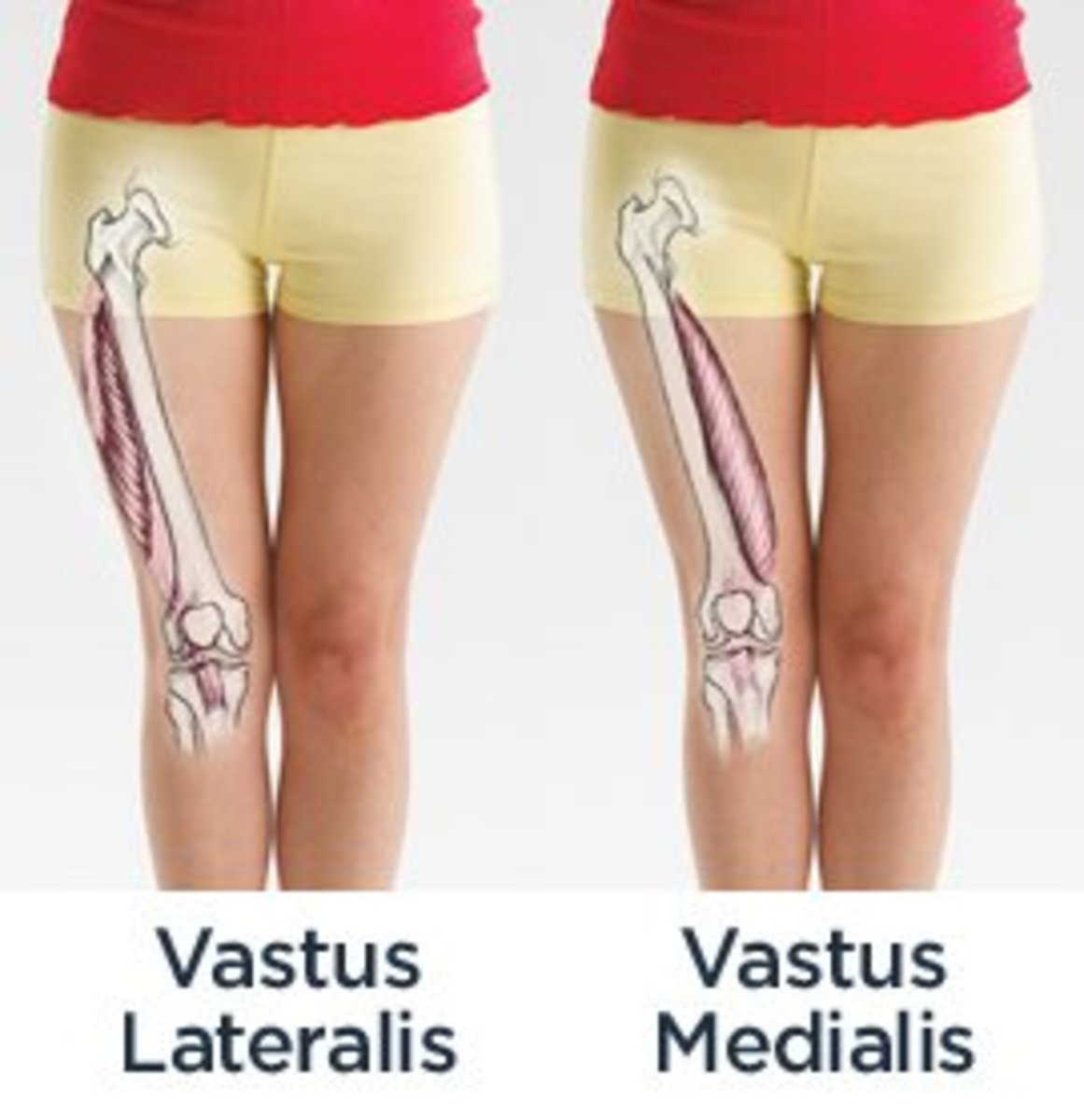How to Breathe Deeply
Babies instinctively know how to breathe deeply. Deep breathing depends on efficient use of abdominal muscles. It is often called abdominal breathing or diaphragmatic breathing.
School children have usually developed poor posture and other bad habits that lead to shallow breathing. Eventually shallow breathing leads to lack of abdominal strength from sheer disuse, which can begin to happen in a person's 20s. Someone who has lost abdominal strength will have trouble regaining it.
I started playing trombone in 5th grade, majored in music in college, and eventually received a masters degree in trombone performance. I also took voice lessons. I had no choice but to learn to breathe efficiently! Dance lessons or involvement in athletics have the same effect.

You have a dome shaped muscle between your lungs and your abdomen called the diaphragm. When you inhale, the diaphragm contracts, moves downward, flattens out. This movement increases the volume of your chest cavity.
Air enters your body through the nose or mouth and travels down the windpipe to your lungs—ultimately into air sacs called alveoli. A very thin membrane separates the alveoli from the surrounding small blood vessels, called capillaries. Hemoglobin, a red blood cell protein, helps move oxygen from the alveoli to the blood. Carbon dioxide from the capillaries replaces the oxygen.
When you exhale, the diaphragm relaxes, moves upward, returns to its dome shape. This movement decreases the volume of your chest cavity. Your lungs no longer have the capacity to hold all that air, so besides a certain residual amount, it is forced out of your body.
Your respiratory system works automatically. You don't have to think about breathing, but you can. And when you think about breathing, you can control it. You can't directly control the movement of the diaphragm, however.
Breathing without movement of the diaphragm is impossible, but that doesn't mean we have to use it at optimum efficiency. When you breathe deeply, your abdomen moves in and out. If that movement is not obviously visible, you are taking shallow breaths.
Shallow breathing mainly results from using only the muscles of the upper chest and neck and not giving the diaphragm enough to do. Some people even wind up practicing a sort of reverse breathing: their belly moves inward on inhalation and outward on exhalation.
Habitual shallow breathing makes other muscles above the diaphragm work unnaturally. Eventually they begin to malfunction and protest. They don't perform their own functions very well, which results in poor posture, and pain in the neck, shoulders, and spine, among other problems. Trigger points, or muscle knots, can develop in these muscles, which makes if difficult to breathe at all.
Use it or lose it applies to breathing as much as to muscle tone. If you get in the habit of shallow breathing, after a while you lose the ability to breathe deeply. Fortunately, with attention and effort, you can regain it.
People develop the habit of shallow breathing for a number of reasons:
- Observation. Young children notice that no one else does.
- Emotion. Breathing stimulates and expresses emotion, which many people consciously or subconsciously avoid
- Body image. The expansion of the belly with deep breathing looks momentarily like a potbelly—or if you have a potbelly already, makes it look momentarily bigger.
- Spending too much time in chairs. Sitting flexes the hip muscles and compresses the belly from beneath, which makes the mechanics of proper breathing difficult. Slouching only adds to the problem.
- Stress. Tension in the shoulders, neck, jaw, and face restricts breathing. Churning and tightness in the belly restricts it even more.

Learning to breathe deeply again
Look closely at a baby or a pet breathing. Notice the easy expansion and contraction of the belly. Every one of us started life breathing like that and eventually got out of the habit.
Now, pay careful attention to your own breathing. When you do aerobic exercise or other aerobic activities, you have to breathe deeply. Your body won't give you any choice. Pay attention.
Here's a basic exercise to develop mindfulness of your breathing and begin to breathe more deeply.
- Stand with your best posture. Place both hands on your waist, with the thumbs at the back and fingers at the front.
- Inhale slowly through your nose. Hold your breath for a while. Then exhale slowly through your mouth. Pay conscious attention to all the physical sensations of your breathing. You should feel your abdomen expanding all the way around.
- Gradually turn your attention to the expansion of your abdomen, until you are not thinking about breathing at all. You're taking deep breaths anyway! Just slowly expand and contract those muscles.
- For the sake of the exercise, the exhalation should take twice as long as the inhalation. Repeat for 5 full breaths at a time. Try to achieve a rate of one cycle every ten seconds.
- Once you get used to the abdominal movement, notice that your chest works somewhat independently. That is, you can expand your abdomen and then expand your chest to take in even more air. Or you can start with chest expansion and follow it with abdominal expansion.
- Repeat frequently, multiple times a day, until you can remain conscious of your breathing for several minutes.
3D view of diaphragm
Building abdominal strength
Once you have begun to be comfortable with that exercise, here are two more that will actually increase the strength of your abdominal muscles:
- Lie on the floor with your knees up and a good-sized book on your belly. Breathe. The book will rise and fall as you inhale and exhale if you're making good use of your diaphragm. A strong diaphragm will be able to lift the book at least 3 cm, preferably 6 cm. Practice at least 20 times. This exercise provides visual feedback, but does not provide any way for the back of your abdomen to move.
- Stand in a swimming pool and pay attention to your breathing. The water pressure on your abdomen is much greater than air pressure. Breathing in water is a kind of resistance training. At first, some people simply can't use their abdominal muscles properly and will lift their rib cage instead. Don't use the water for strength training until you're sure you can properly use your diaphragm in air.
Another ancient Asian breathing exercise, introduced to the West by Carl Jung, is excellent when emotional tightness contributes greatly to shallow breathing. You breathe rapidly, like a bellows. It comes with a risk of hyperventilation, so practice sitting on a chair, bed, or some other safe place.
- Sit comfortably with a straight spine.
- Inhalation and exhalation are equal in length.
- Close your mouth and breathe through the nose 2-3 cycles per second.
- Notice the feeling of effort in the abdomen, chest, and base of the neck.
- When first beginning, keep it up no longer than 15 seconds. When that becomes easy, increase at 5-second intervals. Don't perform it for more than a minute, but up to that point, longer is better.








